Q&A October
This year, in anticipation of our upcoming triennial event, ANAT SPECTRA :: Reciprocity, our monthly Digest Q&A series will spotlight alumni from past ANAT SPECTRA events. Each month, we’ll celebrate the interdisciplinary trailblazers integral to our triennial gatherings.
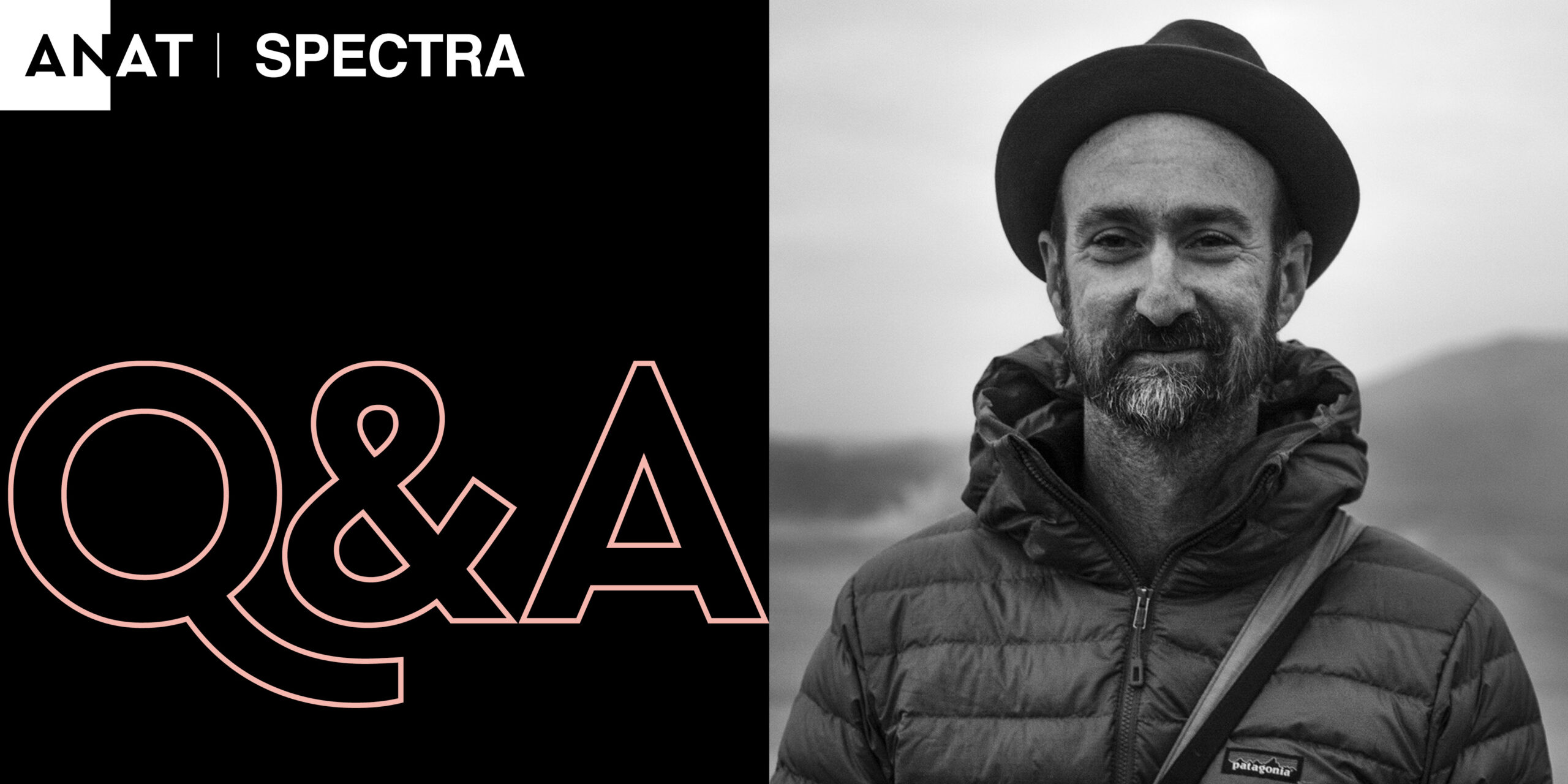
Grayson Cooke, photograph Dea Morgain.
Grayson Cooke
Born in New Zealand and based in Australia, Grayson Cooke is an interdisciplinary scholar and media artist. Mostly working at the intersection of science and art, his works explore landforms and change, both natural and human induced. He has a particular interest in using satellite data to render aspects of the environment in new and unexpected ways. His work has been presented widely in major artistic as well as key political and scientific forums, showing in such diverse contexts as the COP27 Climate Change conference in Egypt, the Society for Ecological Restoration World Conference, the Japan Media Arts Festival, and the Imagine Science Film Festival in New York. As a scholar he has published widely in academic journals, and he worked in the tertiary sector for over 20 years. He now works doing media/communications for the Outback Communities Authority in South Australia.

Grayson Cooke, Kati Thanda 12-03-2017 (2019), from the Invalid Data series.
Tell us about your experience with ANAT SPECTRA.
My first involvement with ANAT SPECTRA came in 2018 in Adelaide, when I was invited to show my video work Open Air as part of the artistic program, and I also presented a paper about the project. Open Air is a feature-length film made in collaboration with painter Emma Walker and the music of The Necks, it’s basically a music video for a Necks album. It was a real pleasure and honour to show the work at ANAT SPECTRA, we screened it at the Mercury Cinema and, although my memory is probably fallible and a bit rose-tinted, I think most people stayed until the end? Which is saying a lot really, for a 67-minute experimental film with no dialogue or narrative!
I really enjoyed my ANAT SPECTRA experience – I’ve been to a lot of academic conferences and I can’t say I ever got hooked, but there is something very special about SPECTRA and the art-science family that ANAT pulls together and represents. I guess it felt like I’d found my people: every conversation and every new face felt immediately familiar, there was a genuine sense of shared concerns, and a hugely diverse yet common impetus behind the work people were doing.
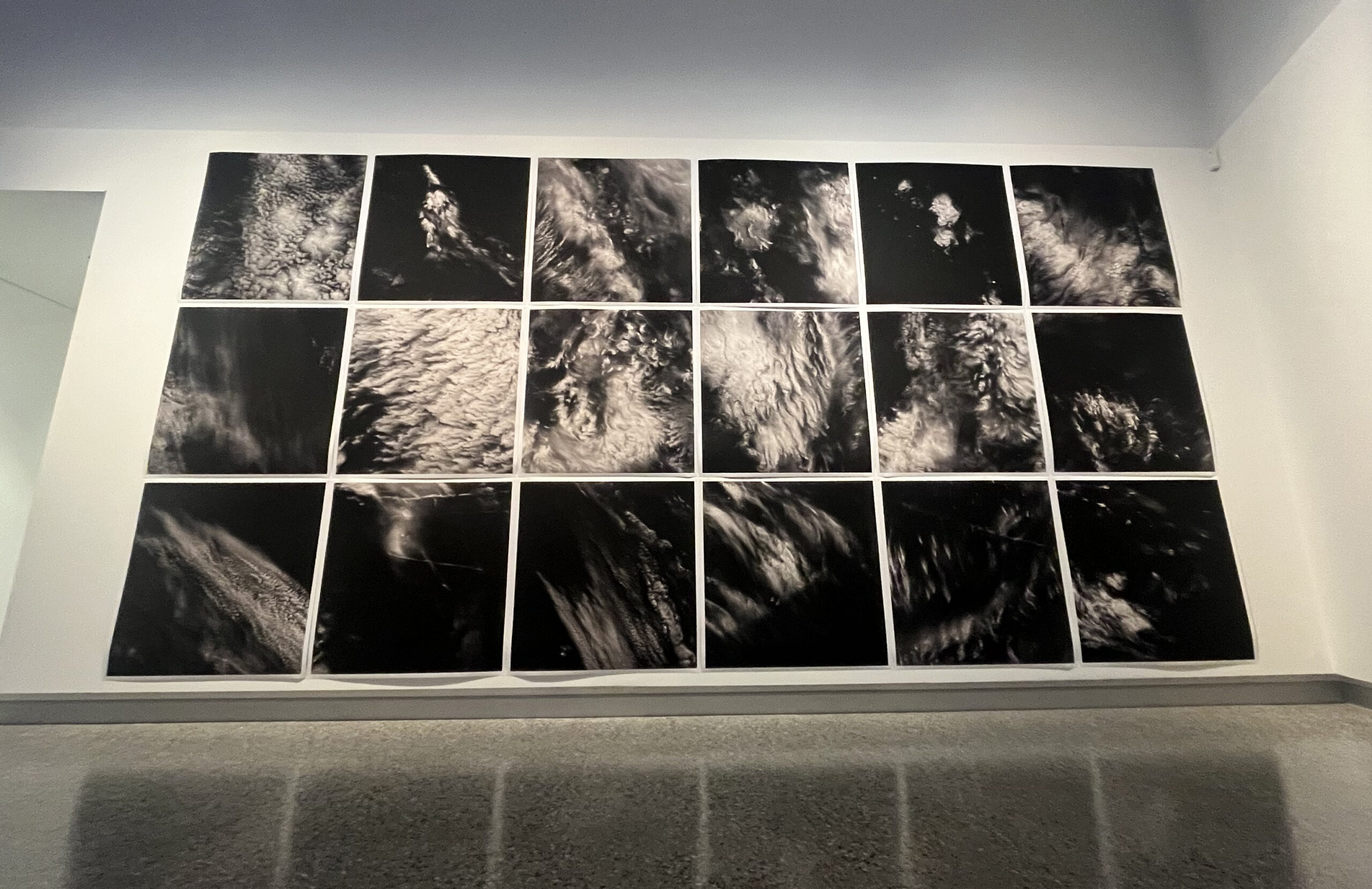
Grayson Cooke, Sampling the Cirrus Band in Strange Weather, at the University of the Sunshine Coast Art Gallery, for ISEA 2024.
What or who inspires you in the realm of interdisciplinary practice, and why?
I did my PhD in the Humanities Doctoral Program at Concordia University in Montreal, because I’d always sensed that I was never really going to specialise, I’ve always been more drawn to ideas of translation, of transformation, and the pleasures of the unexpected. The Concordia program was fantastic for that, and gave me my first taste of creative practice research; I don’t know if this is apocryphal or not but one story that circulated amongst my cohort was that a previous graduate had produced a garden for her PhD.
My big take-away from that period was the idea that research and knowledge could take many forms and that something very exciting happens when you speak the truth of one domain in the language of another. My first art-science project was inspired by the work of my colleague Professor Amanda Reichelt-Brushett, and she’s been an incredible friend and collaborator on many projects ever since. Mandy is an ecotoxicologist and has done a huge amount of work on the environmental impacts of human activity, especially around river systems, marine environments and resource extraction. But she’s also an artist, an excellent painter and an experimenter with the tools and materials of science. She had done these beautiful works with redox reactions between copper wire and silver nitrate, and that was the spark for me, seeing the stunning forms and new perspectives on phenomena that could arise from recontextualising lab processes and scientific materials.
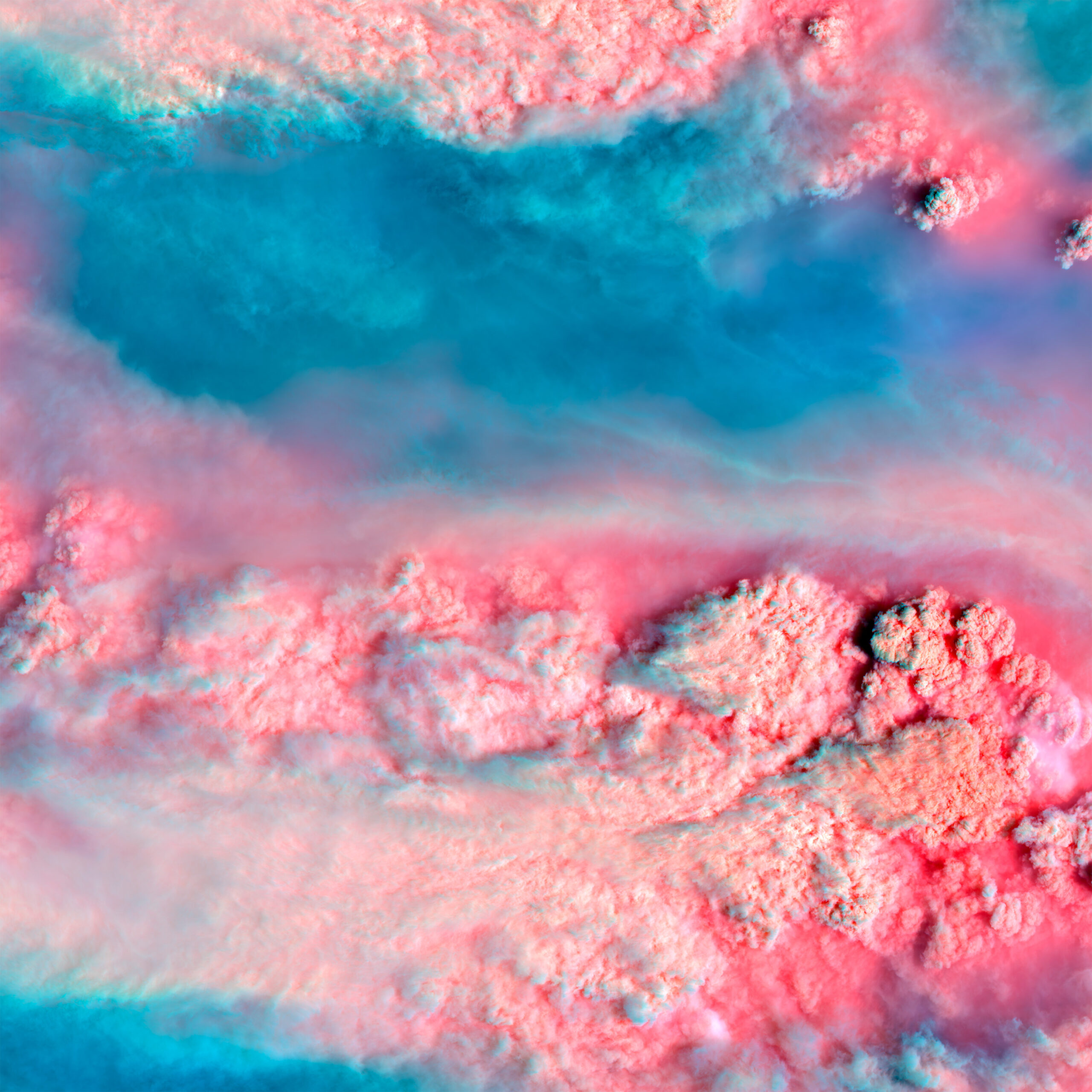
Grayson Cooke, Darwin 27-01-2018 (2019), from the Invalid Data series.
Name a cultural work (film, book, music etc) that inspired or challenged your creative perspective, and tell us why.
I expect this could be a very long list and I’ll get lost wandering through some mishmash of New German Cinema, electroacoustic music and French poststructuralism, so I’m going to limit it to a novel by Michel Houellebecq, The Map and the Territory. Houellebecq is an absolute favourite author of mine, he’s provocative and kind of a (relatively) benign monster, and this novel is less salacious than some of his earlier works and grapples really ironically, and insightfully, with the art world. The main character is a reclusive artist named Jed Martin – though Houellebecq himself also turns up as a character in the novel, living in Ireland and trying to manage his “charcuterie relapse”. Houellebecq uses Martin’s art to propose some fascinating fictional art works, I love how the novel creates a space for conceptualising a whole series of art works without having to actually make them. The novel opens with a description of a painting in which Damien Hirst and Jeff Koons, wearing suits and drinking Budweiser Lite, are sitting in a luxury hotel room in Abu Dhabi – the work is titled Damien Hirst and Jeff Koons Dividing Up the Art Market.
The novel ends, though, with a conceptual work that I suspect was the other main inspiration for that first art-science project I did with Mandy – in fact in retrospect I think I basically ripped off Houellebecq’s idea, as I was reading the novel at the time! After an enormously successful career and becoming increasingly reclusive and ill, Jed Martin has retreated to a vast walled country estate in Limousin, where he subjects photographic prints and small figurines to the depredations of weather and time, and sometimes speeds up the process by spraying the images with acid. The project Mandy and I produced involved taking time-lapse macro-photography of photographic negatives being chemically degraded by a range of strong acids and oxidising agents – sulphuric acid, hydrochloric acid, nitric acid, hydrogen peroxide etc. It was a play with concepts of memory and the archive, with material memory and destructive format-shifting – but also a perhaps-unwitting hommage to Houellebecq.
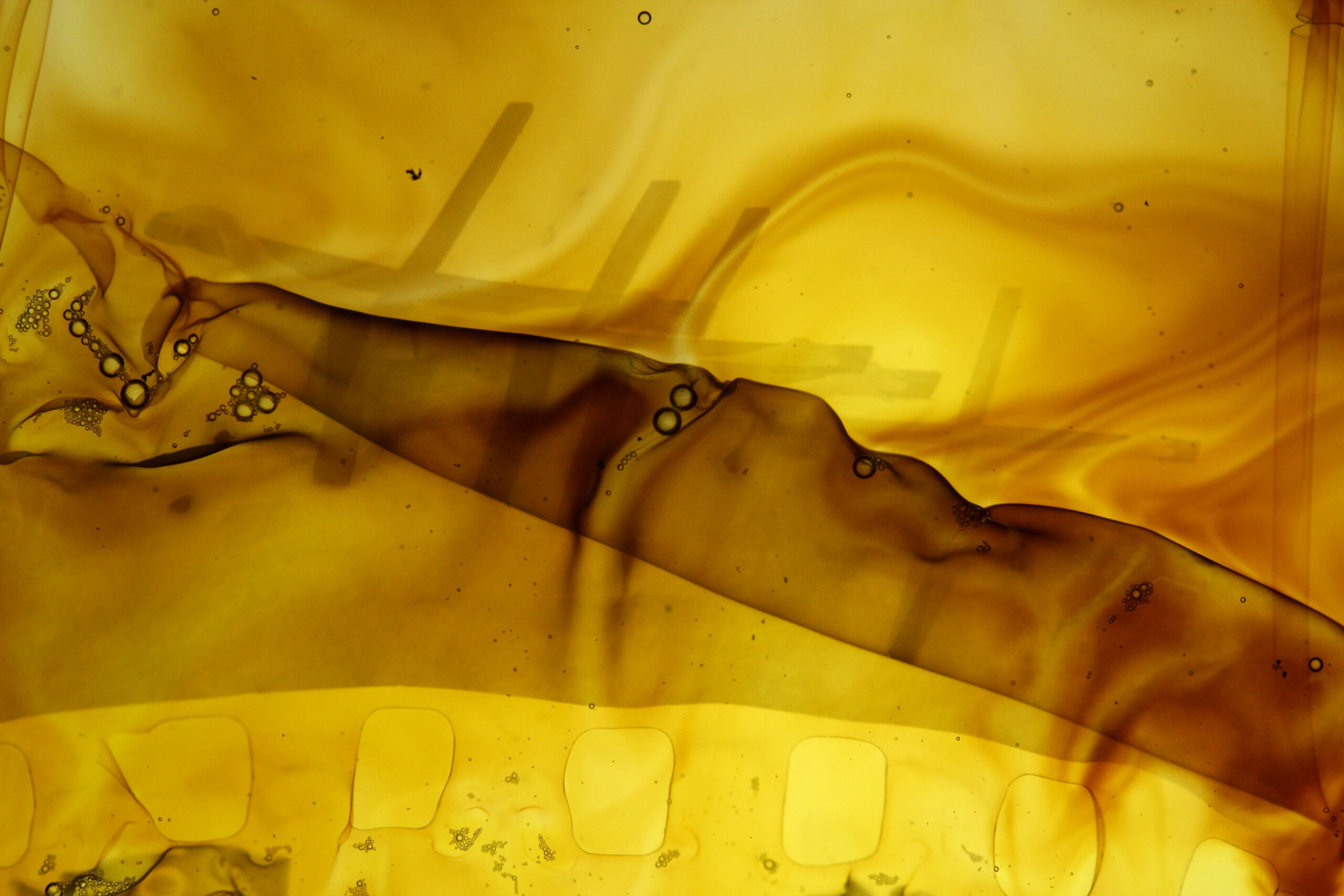
Grayson Cooke, AgX (still), 2015.
If you could collaborate with any figure from history or contemporary culture, who would it be and why?
I feel myself pretty lucky already to have collaborated with the people that I have – guitar maestro Mike Cooper, Mandy Reichelt-Brushett, composer Dugal McKinnon, Emma Walker, the music of The Necks, and many others. So while the bucket-list isn’t empty, it’s certainly had some highlights. But if I do allow myself to contemplate “any figure” and have a bit of a wonder… Firstly, I’d definitely be tempted to have a chat with Jean Sibelius about doing a music video for Symphony No. 2 in D Major. I played trumpet in a youth orchestra that performed it sometime in the 80s. It’s a simply stunning work, very lyrical. No idea what it should look like but I’d be very interested in asking the question. Secondly, let’s aim a littler higher: there is this super cool constellation of NASA satellites called The A Train, they travel in a convoy so the data their many instruments collect can be cross-referenced. Two of the satellites, Cloudsat and CALIPSO, took radar and LIDAR scans of clouds – though sadly they are both de-commissioned now. Cloudsat was developed by an Australian scientist named Graeme Stephens, who works for the Jet Propulsion Laboratory at Caltech and is also an artist. So that’s my fantasy – I want to work with the Jet Propulsion Laboratory scientists and float away on a massive global archive of 3D scans of clouds!
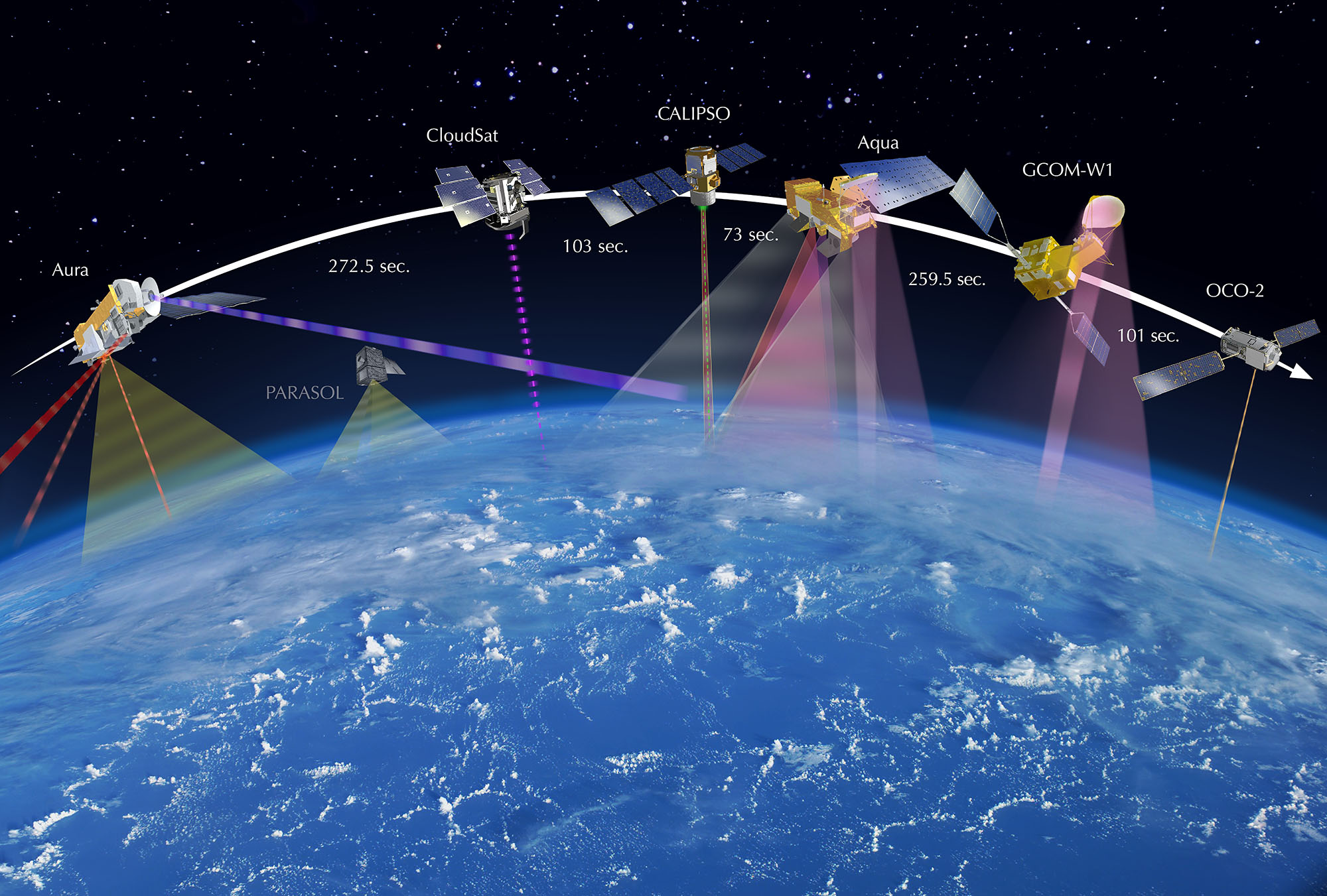
A-train in 2013. As of 2020, the A-Train consists of four satellites. CloudSat and CALIPSO are no longer officially part of the constellation. Image Creative Commons.
What’s next? Tell us about your next project, collaboration or thinking.
Next project, yes, always a good question! Well, I have been playing around with animating some LIDAR data of outback river systems like Cooper Creek, it’s accessed through Geoscience Australia’s ELVIS platform… and maybe something will come out of that, but in truth most of my creative energies are directed towards more domestic concerns, like renovating and building on the property I live on. It’s the outback so it’s very arid but I have a great wee stone house with gardens and lots of piles of dirt, stone, timber and tin. I have come to think of the whole thing as an unruly backyard studio, and there are a bunch of cool projects in store. Etched glass in the front door surround! Getting power to the shed! The other big focus for me right now is the work I do at the Outback Communities Authority in Port Augusta, and in the outback more broadly. I do media/comms for the OCA, so I get to produce media stories all across the outback, looking into issues like energy resilience and waste management, talking with First Nations people about cultural heritage and language, developing an arts strategy for the outback – as a “recovering academic” I couldn’t be happier with where I find myself these days.

Grayson Cooke, Path 99, full dome film in XR:WA at the Scitech Planetarium in Perth, 2022